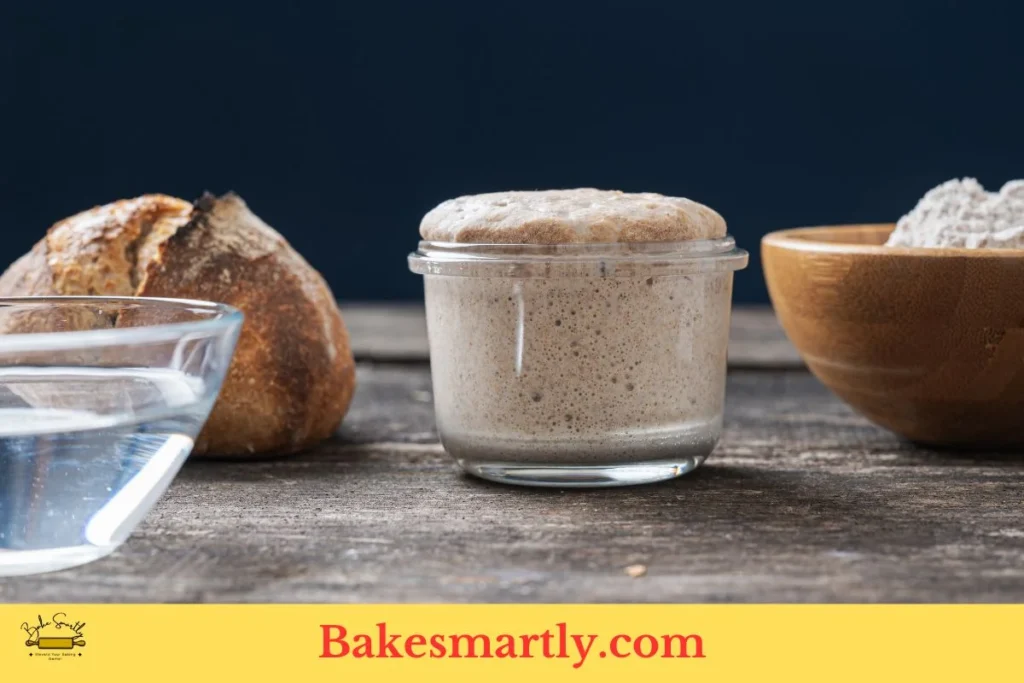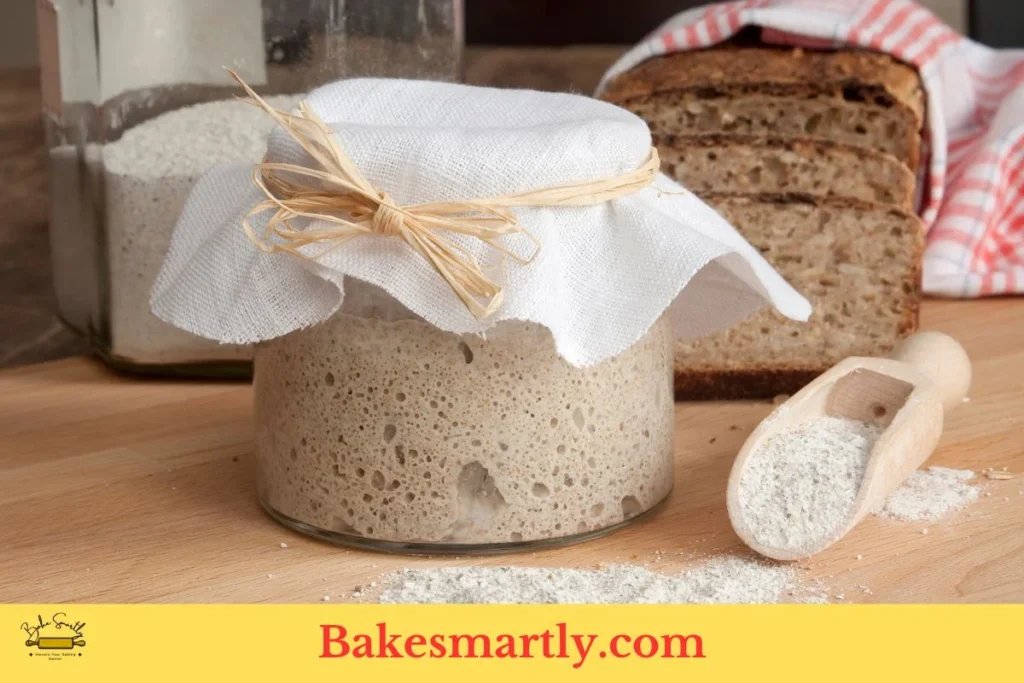
What Happens if You Don’t Discard Sourdough Starter
Starting and maintaining a sourdough culture can be a gratifying journey, but it requires care and attention. One common question that arises in the world of sourdough enthusiasts is, “What happens if you don’t discard sourdough starter?”
In this blog, we’ll delve into the intriguing consequences of neglecting your sourdough companion.
Table of Contents
ToggleImportance of Discarding Sourdough Starter
One important, yet often overlooked, part of taking care of your sourdough is the regular process of getting rid of some of it. Even though it might seem strange to throw away a piece of your carefully nurtured sourdough starter, this step is actually very important for a few reasons.
- Keeping the Starter Healthy: As time goes by, the wild yeast and bacteria in your sourdough starter can become less active and lively. This can lead to a starter that doesn’t work as well to make your bread rise. When you regularly toss out some of the starter and give it fresh flour and water, it’s like giving a boost to the community of microorganisms, making sure it stays strong and active.
- Balancing the Acidity: Sourdough starters create lactic and acetic acids, which give sourdough bread its tangy taste. But if these acids build up too much, they can make your bread overly sour. Getting rid of some of the starter helps control the acidity, so you can keep a balanced and tasty flavor in your bread.
- Avoiding Overflow: If you don’t regularly toss some starter and add fresh food, it can grow too big for its container and become hard to handle. This can lead to messes, wasted starter, and needing to spend more time and resources on it.
- Saving Ingredients: Sourdough baking uses a lot of flour, and if you keep growing your starter without throwing any away, you’ll use more flour than you need. By tossing some out, you use less starter, saving flour and cutting down on waste.
- Consistency in Baking: When you stick to a routine of getting rid of some starter and giving it fresh food, you create a more predictable and dependable starter. This predictability is crucial for getting consistent results when you make sourdough bread.

3 Signs of Neglecting Your Sourdough Starter
Ignoring your sourdough starter can cause several problems, and it’s essential to spot the signs of neglect to keep it healthy and active.
Here are three important signs that your sourdough starter might need more attention:
1. Unwanted Aromas
One of the most noticeable indicators of a neglected sourdough starter is the development of unwanted aromas. These aromas are often described as “off” or “unpleasant.” While sourdough bread is known for its characteristic tangy scent, a neglected starter can take on strange and less appealing odors.
These unwanted aromas can significantly affect the flavor of your bread, resulting in loaves that taste different from what you initially intended. If your starter emits a pungent or foul smell, it’s a clear sign that it’s time for some tender loving care.
2. Slow Fermentation
A well-maintained sourdough starter should be lively and active. It should readily produce bubbles and increase in volume after a feeding. However, when you neglect your starter by failing to discard and refresh it regularly, the microbial activity within it can slow down. This leads to a sluggish starter that doesn’t ferment the dough efficiently.
As a result, your bread may require longer proofing times, and you might end up with denser loaves that lack the desired light and airy texture. If your sourdough starter is no longer bubbling and seems lethargic, it’s time to revive it.
3. Off-Flavors
Neglected starters are prone to developing off-flavors, and these can manifest in various ways. The most common off-flavors include excessive sourness, bitterness, or just an overall lack of the delicious complexity that defines sourdough bread.
These off-flavors can make your bread less enjoyable and may even lead you to think there’s something wrong with your sourdough technique. However, in most cases, it’s simply a matter of providing the right care and maintenance to your starter.

Consequences of Not Discarding Sourdough Starter
In the world of making sourdough bread, not tossing out part of your starter can cause some serious problems. Understanding these issues is crucial if you want to become a skilled sourdough baker.
Too Much Sourness
One big problem when you skip discarding some of your sourdough starter is that it gets too sour. Sour starters have live yeast and bacteria, which eat the flour and make your bread rise. They also create acids that give your bread its unique flavor. But if you don’t toss some starter regularly, these acids can build up too much.
When your starter gets too acidic, it can slow down the yeast, making your bread rise less. That means you might end up with a denser, less yummy loaf. The extra acid can also change the taste, making it overly sour and masking other delicious flavors.
Unwanted Weird Tastes
Sourdough bread has its fantastic taste from a perfect balance of acids and other compounds. When you don’t discard, this balance gets messed up, and you end up with strange tastes. This can mean an overly strong and sometimes harsh sourness or even a funky, unappetizing flavor.
To keep that delicious sourdough flavor, you have to toss some starter and add fresh flour and water regularly. This helps dilute the extra acids and allows the tiny organisms to create a more balanced taste in your bread.
Inconsistent Results
Great baking is all about consistency. If you don’t toss your starter regularly, you’ll get inconsistent results. One time your bread might turn out great, and the next time it could be a disappointment in terms of texture, flavor, and rise.
By sticking to a schedule of feeding and discarding, you create a stable environment for your sourdough culture. This means your loaves will keep their desired quality and taste. You’ll be able to refine your baking skills and make delicious bread every time.
Mold and Contamination
The worst thing that can happen when you neglect your starter is mold growth and contamination. Sourdough starters are at risk of getting moldy if they aren’t taken care of. Mold can be dangerous to eat, and it might mean you have to throw out your entire starter – which is heartbreaking for any sourdough fan.
To avoid mold and contamination, it’s essential to keep your starter in a clean and controlled environment. Regularly discarding and feeding your starter helps prevent unwanted microorganisms from taking over, keeping your sourdough culture healthy and free from contaminants.

How to Revive a Neglected Sourdough Starter in (6 Quick Steps)
Neglecting your sourdough starter can happen to the best of us, but the good news is that with a little care and attention, you can bring it back to life. Here are six quick and effective steps to revive a neglected sourdough starter:
- Assess Your Starter: Start by taking a good look at your dormant sourdough starter. It might have a layer of gray liquid on top, which is known as “hooch.” This is a sign that it’s hungry and in need of attention.
- Discard and Refresh: Begin by discarding a significant portion of your starter. Removing about 80% of it is a good rule of thumb. You can use this discarded portion for other recipes or simply discard it. This step is crucial to reduce the excess acidity and allow your starter to thrive.
- Feed Your Starter: After discarding, it’s time to feed your starter with a mixture of equal parts flour and water. For example, if you removed 4 ounces of starter, add 4 ounces of flour and 4 ounces of water. Mix it well until you achieve a smooth, lump-free consistency.
- Let It Rest: Cover your refreshed starter loosely and let it sit at room temperature for about 4-6 hours. During this time, the yeast and bacteria will start to wake up and feed on the fresh flour mixture.
- Observe and Repeat: After a few hours, check your starter for signs of life. You should see bubbles forming and a slight increase in volume. If it’s not showing much activity, give it more time. Repeat the feeding and resting process until you notice a significant rise and a pleasant tangy aroma, which indicates it’s ready to use.
- Store and Maintain: Once your starter is vibrant and active, you can return to your regular feeding schedule. If you don’t bake frequently, store it in the refrigerator and feed it once a week. Before using it in a recipe, remember to take it out and feed it at room temperature to ensure it’s in peak condition.
By following these six quick steps, you can easily revive your neglected sourdough starter and get back to making delicious, freshly baked bread in no time.

Preventative Measures to Avoid Neglecting Your Sourdough Starter
Maintaining a vibrant and active sourdough starter is easier when you take proactive steps to prevent neglect. Here are some preventative measures to keep your starter healthy and thriving:
- Establish a Feeding Routine: Set a regular feeding schedule for your starter, such as once a day or every 12 hours. Consistency is key to maintaining a healthy culture. Use an alarm or calendar reminder to help you stay on track.
- Use a Feeding Ratio: Adopt a consistent feeding ratio, like a 1:1:1 (equal parts starter, flour, and water). This balanced ratio provides your starter with the nourishment it needs to stay active and strong.
- Record Keeping: Keep a sourdough journal to track your starter’s progress. Note the time and date of feedings, changes in activity, and any unusual signs. This record can help you identify issues before they become serious.
- Temperature Control: Maintain a stable and appropriate temperature for your starter. Most starters thrive at around 70-75°F (21-24°C). Consider using a proofing box or finding a consistent, warm spot in your kitchen.
- Emergency Backup: Keep a small portion of your starter stored in the refrigerator. This backup can be a lifesaver in case your primary starter is neglected or accidentally damaged. Store it in an airtight container and refresh it periodically.
- Starter Sharing: Share some of your starter with friends or family. By gifting portions of your starter, you create a support network where others can help revive your culture if you ever face neglect.
- Label Your Containers: If you maintain multiple starters or use different types of flours, clearly label your containers to avoid confusion. This simple step can prevent feeding mistakes.
By proactively implementing these preventative measures, you can significantly reduce the risk of neglecting your sourdough starter.
What Happens if You Don’t Discard Sourdough Starter | Final Thoughts
In the world of making sourdough bread, tossing some of your favorite starter might sound strange, but it’s an essential step to keep your sourdough culture healthy and productive. If you skip this, your bread could end up smelling bad, fermenting slowly, and tasting off – giving you inconsistent results and even a risk of mold.
But don’t worry, with the right care, you can wake up a sleepy starter and enjoy delicious homemade sourdough bread.
To avoid neglecting your starter, create a routine for feeding it, stick to a consistent ratio, and track its progress. By doing these things, you’ll make sure your sourdough buddy stays reliable and makes your bread taste great.
Lindsey Mackenzie
About me
Hi there! I’m Lindsey Mackenzie, the founder of Bake Smartly. Baking has been my passion since childhood, growing up in my father’s bakery. With Bake Smartly, I’m excited to share my love for all things sweet and savory. Join me on this delicious journey as we whip up scrumptious treats and sprinkle joy into every bite!






